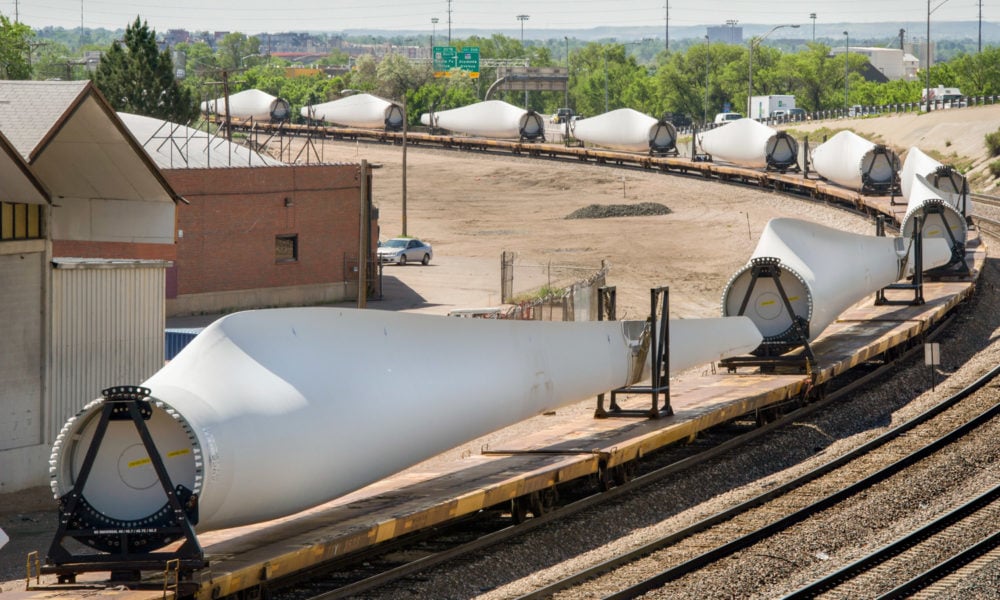Infrastructure Week, meet Infrastructure Plan.
Celebrate the yawning gap.
The former was once a bright light in a darkening swirl, fading to a whisper of a hope in a rising cacophony of disrepair, ending as a butt of a joke with rapidly diminishing humor year-on-year. Indeed, despite four years of incantations, and ever and always the demonstrated need, there ultimately never was a Trump administration infrastructure plan.
In fact, just one thing emerged as shovel-ready from their four years of dangled, mangled hopes: that old infrastructure trope, to be buried six-feet deep.
But now we have a plan. The Biden administration’s “American Jobs Plan,” part one of a two-part Build Back Better plan.
And this is a plan. A vision, an outline, an actionable course for how to advance such desperately needed change.
It needs work. It needs to be pushed on scale, and on scope. But it’s a plan. Which means we now have a plan to build from, and a plan to build on.
Let’s build.
Why infrastructure
All across the country, communities have been forced to repeatedly bear witness to the stunning devastation wrought by infrastructure simply no longer up to the task required of it. And each year, as the climate changes but too many leaders’ willingness to reckon with it does not, the resilience gap widens a little bit further, a little bit further, a little bit further. And people are left in the lurch—with harms to health, with death, with loss of jobs, with costs.
But the infrastructure challenge, for as much as it is a challenge, is also an incredible opportunity. Because when everything needs changing, everything can be changed. And we have so much that needs to change.
To wit, take this:
- The imperative for driving down heat-trapping emissions, coupled with
- Escalating climate impacts, coupled with
- Chronic underinvestment in our nation’s infrastructure, coupled with
- Marginalization of low-income communities, communities of color and rural communities, coupled with
- The hollowing out of American manufacturing
And flip it to this:
- Building out the clean energy transition, while
- Preparing for, and adapting to, climate impacts, by
- Investing in climate-ready infrastructure, while
- Setting right long-standing inequities that discrimination and racism have wrought, and
- Rebuilding our manufacturing base to ensure local clean energy union jobs, especially in those places hurting from the shift away from fossil fuels.
Because ultimately, infrastructure isn’t just about the built environment, nor even the concurrent advancement of climate action. It’s also a chance to counter long-standing inequities, from pollution burden to resource access, and spur economic revitalization, with good union jobs and local investment.
The question isn’t whether to commit to this, it’s how in the world could we not, and how can we do even more?
Spotlight on the power sector
Our infrastructure is sprawling in scope and staggering in need. From transportation, to water, to broadband, to bridges, there’s so much to confront. And for each: a chance to correct the faltering state of that which is into a better version of that which can, should, and must be.
To understand the challenge and the chance, consider the power sector.
Our electricity system has long been one of the nation’s largest sources of pollution, from climate-forcing carbon dioxide to health-harming air and water toxics. If we have any hope of slowing the steady advance of climate change, cleaning up the power sector will be at the heart of it.
Already we’ve seen significant progress to date. Clean energy investments have been leaping to the fore. What’s more, a vision is coalescing for where we have to go, and what it takes to get there.
The challenge lies in overcoming that gap—between where we are and where we increasingly understand we need to be—and all the many vested fossil fuel interests currently stalling that change.
To bridge it, we need:
- Commitment to clean energy targets, aiming for 100 percent clean power by 2035, to cement the vision and align investments.
- Rapid deployment of renewable energy resources and displacement of fossil fuels, beyond the present pace of change.
- Prioritization of energy efficiency, weatherization, and electrification, to ensure our energy end uses are healthy, livable, and clean.
- Infrastructure that can hold it all together, from transmission lines to boost renewables to grid modernization that enables flexibility in an increasingly dynamic system.
- Research and development of emerging technologies that will get us the full distance, from long duration storage to local microgrids.
And all of it needs to be climate-ready—built for the future, not for the past, to ensure it’s infrastructure we can truly count on as opposed to the source of the repeated faltering failures we’ve become far too familiar with.
And all of it needs to account for the long-standing inequities in the energy system, from pollution burden to clean energy access, and drive investments and benefits accordingly—here, with at least 40 percent of benefits flowing to disadvantaged communities, as in the Justice40 Initiative.
And all of it needs to be considerate of the implications of an energy transition away from fossil fuels for the workers and communities that have long had a hand in powering this nation, ensuring thoughtful, proactive, full-throated support for those impacted, and ensuring proactive development of high-road labor standards for the new jobs to come.
That’s a lot.
This plan doesn’t yet go the distance, but it does present a start. It’s short on scale of investment and in full sweep of scope, but it presents a start.
And once again, because it’s a plan, we can build on that.
Believe In better
At the heart of a commitment to tackling infrastructure is leadership, because it requires a belief that we can—and should—do better, as well as a belief in our capacity for change.
Confronting the challenges of today, and those of tomorrow, takes work, takes money, takes time—and it takes eyes to the horizon. We will not get where we need to go if we only think of today.
An ambitious, considerate infrastructure plan can help us set that course.
The Biden administration is taking that first step; now Congress, together with the administration, must meet this moment and see it through. And along the way, we all have a responsibility to take it up, scale it up, and ensure it is, indeed, the plan we need, and seen all the way through.

